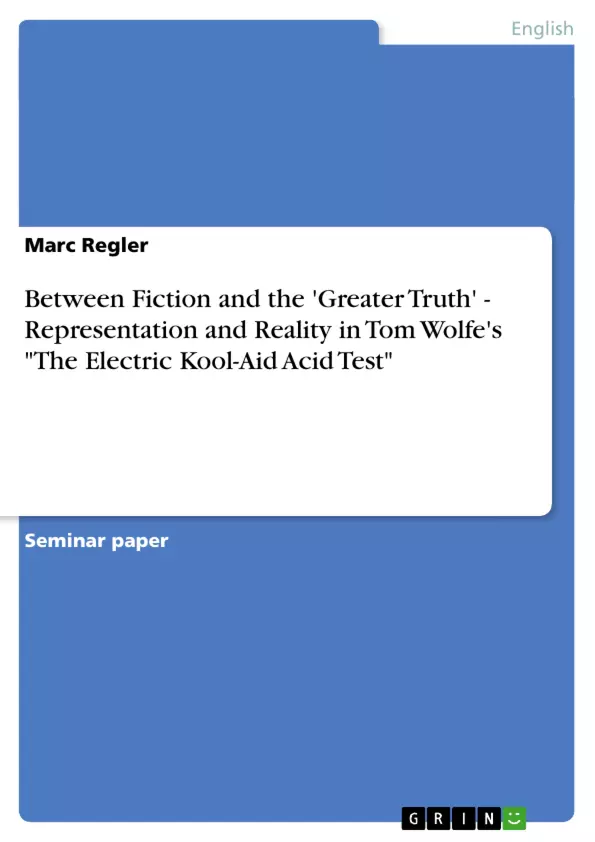A close reading of Tome Wolfe's The Electric Kool-Aid Acid Test considering Wolfe's concept of New Journalism as a form of writing between the novel and journalism.
Inhaltsverzeichnis (Table of Contents)
- Introduction
- Tom Wolfe and his theories of writing
- Journalism and New Journalism
- The novel and the social realist novel
- Material and Form in Wolfe's writing
- The Electric Kool-Aid Acid Test
- Author's note: material and approach to TEKAAT as a means of representation
- The narrative as interpretative key to the body of material
- Subjective reality and its technical manifestation in representation
- Conclusion
Zielsetzung und Themenschwerpunkte (Objectives and Key Themes)
This essay examines the relationship between fiction, greater truth, and the selective transformation of reality in Tom Wolfe's The Electric Kool-Aid Acid Test. It analyzes how Wolfe's concept of subjectivity and representation, particularly in the context of New Journalism, influences the portrayal of reality in the book.
- The interplay between representation and reality
- The role of subjectivity in both experience and representation
- The relationship between fiction and non-fiction
- The techniques and forms of representation employed by Tom Wolfe
- The influence of New Journalism on Tom Wolfe's writing
Zusammenfassung der Kapitel (Chapter Summaries)
The first part of the essay explores the theoretical background of The Electric Kool-Aid Acid Test, examining Wolfe's views on the novel and New Journalism in his essays "The New Journalism" and "Stalking the Billion-Footed Beast." The essay analyzes Wolfe's concept of New Journalism as a new literary tradition and its relationship to the social realist novel.
The second part focuses on The Electric Kool-Aid Acid Test itself, analyzing the relationship between the book's representation and its substance. It examines the role of the narrative, language, and point-of-view in shaping the book's portrayal of reality.
Schlüsselwörter (Keywords)
The main keywords and focus topics of the text include: The Electric Kool-Aid Acid Test, Tom Wolfe, New Journalism, social realist novel, subjectivity, representation, reality, fiction, non-fiction, narrative, language, point-of-view.
- Arbeit zitieren
- Marc Regler (Autor:in), 2004, Between Fiction and the 'Greater Truth' - Representation and Reality in Tom Wolfe's "The Electric Kool-Aid Acid Test", München, GRIN Verlag, https://www.grin.com/document/24666



